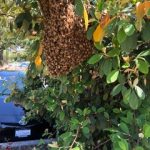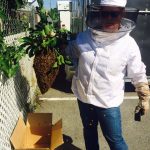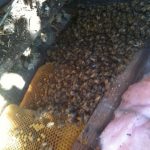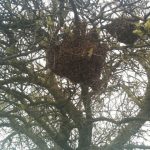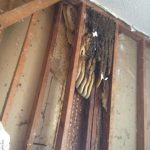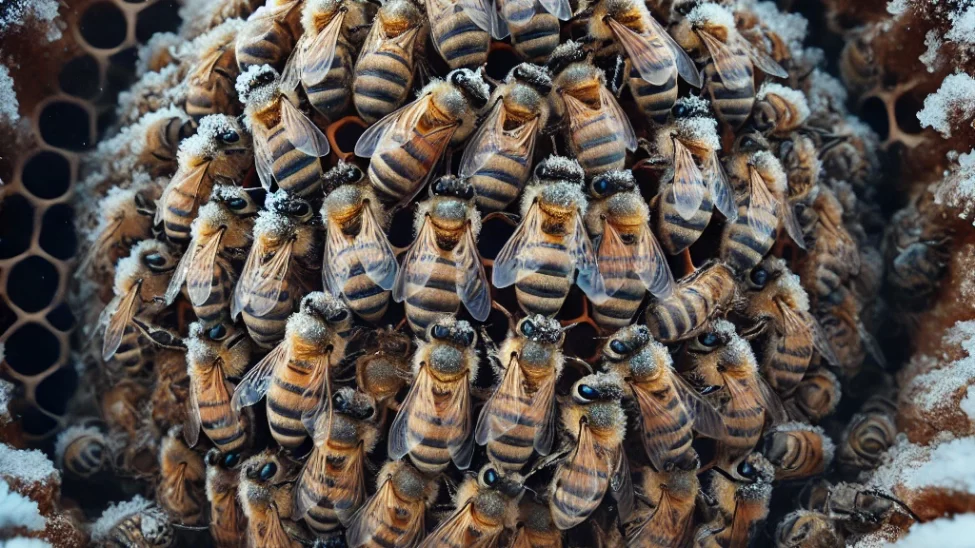
What Happens to Bees During Winter?
As winter approaches, bees undergo fascinating changes to ensure their survival in colder months. For companies like The Honey Ladies in San Jose, CA, understanding this natural cycle is key to managing hives and ensuring that bees remain healthy and productive year-round. Winter is a time of careful preparation and adaptation for bees, as they employ a series of strategies to make it through the cold season.
Preparing the Hive for Winter
Before the first frost arrives, honeybees begin preparing their hive for winter survival. As temperatures drop and flower resources dwindle, bees switch from foraging for nectar to focusing on survival. During late summer and fall, the worker bees work diligently to stockpile honey, which will be their primary food source throughout winter.
The queen reduces her egg-laying activities, allowing the colony to stabilize its size. With fewer mouths to feed, the bees can focus their energy on maintaining the hive and ensuring enough food is stored. A well-prepared hive can hold anywhere from 60 to 80 pounds of honey, which provides the necessary nutrition to sustain the colony until spring.
Forming the Winter Cluster
One of the most remarkable behaviors of bees during winter is the formation of a “winter cluster.” As temperatures drop, bees will huddle closely together in the center of the hive, forming a tight ball around the queen. This cluster generates and preserves heat, keeping the colony warm during cold spells.
The worker bees in the outer layers of the cluster continuously vibrate their flight muscles, creating warmth that radiates inward. The bees will rotate positions within the cluster, with colder bees from the outer edges moving inward and warmer bees from the center rotating outward. This constant movement ensures that no bee gets too cold for too long.
Inside the cluster, the temperature can range from 90°F at the core, where the queen is located, to 40°F at the outer edges. This heat is crucial for keeping the queen alive and for maintaining the minimal activity level necessary for survival.
Conserving Energy and Food
During winter, bees enter a state of semi-hibernation, meaning they conserve their energy as much as possible. The hive becomes quieter, and the bees significantly reduce their movement to save resources. For The Honey Ladies and other beekeepers, it’s essential to ensure that hives have enough food to last through the season. A shortage of honey can result in colony loss, as bees may starve before spring arrives.
Beekeepers often check their hives throughout the winter to make sure food reserves remain sufficient. If necessary, they can supplement the bees’ diet with sugar syrup or fondant to help them make it through until flowers bloom again.
Emerging from Winter
As winter draws to a close and temperatures begin to rise, the queen will resume laying eggs, preparing the colony for the busy spring ahead. Worker bees will venture out on warm days to perform “cleansing flights,” which involve leaving the hive to defecate after months of being confined inside.
Spring is a critical time for bees, as they must rebuild their population and begin foraging once more. For companies like The Honey Ladies, ensuring the health of their hives during winter is key to maintaining strong colonies for honey production and pollination services in the warmer months.
The Role of Beekeepers
Winter is a time of careful management for beekeepers. The Honey Ladies take several steps to protect their hives, such as ensuring proper insulation and ventilation to prevent moisture buildup, which can be deadly to bees in cold weather. By checking food supplies and monitoring the overall health of the hive, beekeepers can help their colonies survive the winter and emerge strong in the spring.
In conclusion, winter is a challenging yet fascinating time for bees. Their natural ability to adapt and work together to survive the cold months is nothing short of remarkable. For beekeeping companies like The Honey Ladies, supporting these winter preparations ensures that their hives thrive year after year, contributing to the well-being of the environment and the production of delicious honey.






